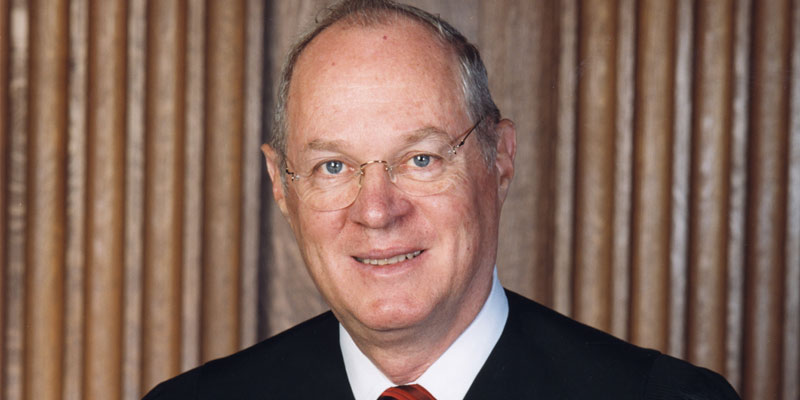Associate Justice Anthony Kennedy announced this week that he will retire from the U.S. Supreme Court on July 31. Here are five facts you should know about the high court’s primary “swing vote” on social issues:
1. Anthony Kennedy, age 81, served as a federal judge on the United States Court of Appeals for the Ninth Circuit from 1975 to 1988. Justice Kennedy was nominated to fill a vacancy on the U.S. Supreme Court in 1987. President Ronald Reagan initially nominated Robert Bork, who was rejected by the Senate, and Douglas Ginsburg, who withdrew from consideration after admitting to using marijuana while a law school professor. Kennedy has served as an associate justice since February 18, 1988. His retirement will mark 30 years on the court.
2. When he nominated Kennedy, Reagan called Kennedy a “true conservative.” For the first four years he was on the Court, Kennedy was indeed considered a reliably conservative justice. In his first term, he voted with two of the court’s most conservative members (Chief Justice William H. Rehnquist and Justice Antonin Scalia) more than 90 percent of the time. In 1992, though, Kennedy began siding more often with the liberal side. In 1992, Kennedy joined Justices Sandra Day O’Connor and Justice David Souter in writing the court’s plurality opinion in Planned Parenthood of Southeastern Pennsylvania v. Casey. Casey reaffirmed Roe v Wade and imposed a new standard to determine the validity of laws restricting abortions. The new standard asks whether a state abortion regulation has the purpose or effect of imposing an “undue burden,” which is defined as a “substantial obstacle in the path of a woman seeking an abortion before the fetus attains viability.”
3. In 2013, Kennedy provided the key swing vote in United States v. Windsor, the case that invalidated the federal Defense of Marriage Act, which defined marriage as a union between a man and a woman for purposes of over a thousand federal laws and programs. Kennedy wrote the majority opinion, in which he said, “The State’s decision to give this class of persons the right to marry conferred upon them a dignity and status of immense import.” He also added that “DOMA undermines both the public and private significance of states-sanctioned same-sex marriages.”
4. Kennedy’s opinion in Windsor was followed up two years later by his support for Obergefell v. Hodges. In that ruling—in which Kennedy again cast the deciding vote—the state of Ohio’s ban on same-sex marriage was ruled unconstitutional. The ruling federalized the marriage issue and made same-sex marriage legal in all 50 states. Once again writing the majority decision, Kennedy’s majority opinion said that the “limitation of marriage to opposite-sex couples may long have seemed natural and just, but its inconsistency with the central meaning of the fundamental right to marry is now manifest. With that knowledge must come the recognition that laws excluding same-sex couples from the marriage right impose stigma and injury of the kind prohibited by our basic charter.”
5. Although Kennedy frequently sides with the liberal side of the Court on most social issues—especially abortion and LGBT rights—he has tended to take a libertarian position on First Amendment issues. Kennedy voted to protect flag burning in the case of Texas v. Johnson and to strike down a congressional law prohibiting “virtual” child pornography in Ashcroft v. ACLU. More recently, Kennedy supported the free speech rights of a Christian baker in Masterpiece Cakeshop v. Colorado Civil Rights Commission, wrote a strong concurring opinion in NIFLA v. Becerra defending the free speech of pro-life pregnancy resource centers and in Janus v. AFSCME supported the right of public sector employees not to subsidize the speech of other private speakers.
(Courtesy of the Ethics and Religious Liberty Commission)
Don’t miss out! Subscribe today to have Alabama’s leading headlines delivered to your inbox.
